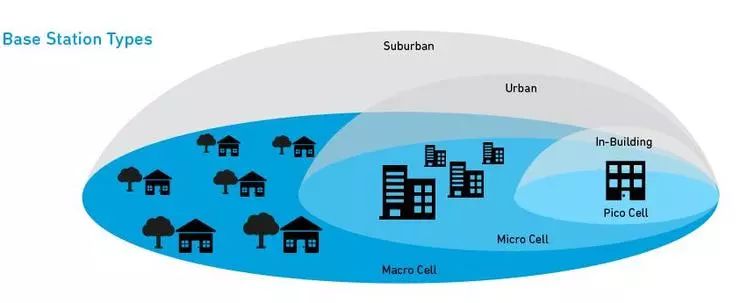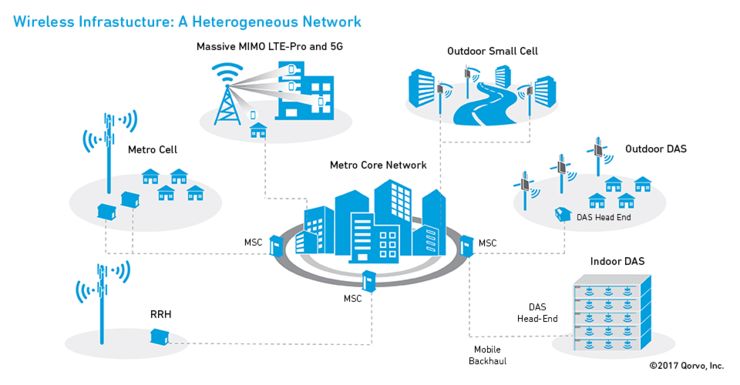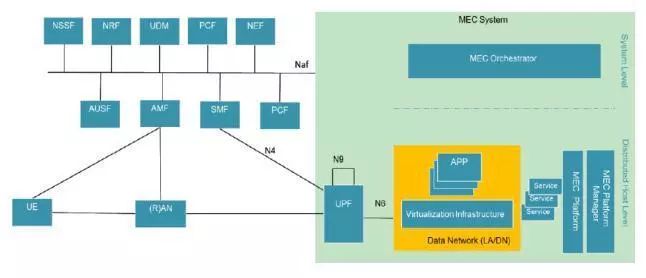▲Click above Leifeng Network to follow


The biggest feature of 5G network architecture is its “decentralization,” and MEC is key to achieving decentralization.
Written by | Guo Renxian
According to IDC, it is expected that by 2020, over 50 billion terminals and devices will be connected globally, with over 40% of data needing to be analyzed, processed, and stored at the network edge.
In the 4G era, 80% of network traffic occurs indoors, and industry experts speculate that indoor network traffic will still account for a large proportion in the 5G era. Due to the small coverage area of high-frequency signals in 5G and their weak ability to penetrate buildings, the proportion of small cells in 5G base station deployment will greatly increase to better meet the needs of various 5G application scenarios.
Traditional base station construction follows the path of “from outdoor to indoor,” where a macro base station can cover an area of several hundred meters, even over a thousand meters, relying on the strong penetration ability of low-frequency signals to cover indoor scenarios.
After the issuance of 5G commercial licenses, it indicates that 5G has officially entered the commercial implementation stage. Due to the small coverage area of high-frequency signals in 5G and their weak ability to penetrate buildings, most future application scenarios will occur indoors, such as high-definition video, VR/AR, hospitals, etc., all requiring high-performance indoor networks. These 5G applications have sparked new thoughts among industry professionals regarding base station deployment.
The concept of small cells was initially proposed to address the needs of supplementary coverage, high-traffic areas, and customized indoor scenarios.

According to different transmission powers and coverage radii, small cells can be divided into: micro cells, pico cells, and femto cells.
-
Micro Cells. The single carrier transmission power is 500mW-10W, with a coverage capability of 50-200 meters, which can complement macro cells (single carrier transmission power greater than 10W, coverage capability greater than 200 meters) well;
-
Pico Cells. The single carrier transmission power is 100mW-500mW, with a coverage capability of 20-50 meters, suitable for coverage within a hundred meters, such as shopping malls, hospitals, and train stations;
-
Femto Cells. The single carrier transmission power is below 100mW, with a coverage capability of 10-20 meters, its transmission power is at the level of tens of milliwatts, making it suitable for customized indoor scenarios with a coverage radius of about twenty meters, such as homes and enterprises.
Additionally, the deployment of small cells does not require machine rooms and standardized mounting poles, and can fully utilize existing WLAN transmission, site locations, and power sources, which presents significant business advantages in the process of entering specific properties. In terms of price, after entering stable mass production, the unit price of LTE macro base stations ranges from tens of thousands to hundreds of thousands, while the price of small cells varies from a few thousand to tens of thousands.
Currently, both 5G networks and terminals in China have entered a mature stage. The Ministry of Industry and Information Technology recently stated that this year, 5G will mainly be deployed in some hot areas and large cities, and local governments are also accelerating the pace of 5G network construction and deployment. For example, in Beijing, according to data released by the Ministry of Industry and Information Technology on the 7th, as of the end of July, the Tower Company had completed the construction and delivery of 7,863 5G base stations, and operators had opened 6,324 5G base stations, with the expectation that more than 10,000 5G base stations will be built in Beijing by the end of 2019. In addition, cities like Shanghai, Chengdu, and Shenzhen also plan to complete more than 10,000 5G base stations by the end of the year.

As mobile device users shift from smaller data packets (images, emails, web pages, etc.) to larger data packet media (such as video, games, and real-time streaming), there is a need for networks with fast switching and data uplink/downlink from one tower to another, regardless of size. The addition of small cells can provide an efficient and low-cost solution, which is also the foundation for the widespread development of many 5G applications.
In the early stages of 5G construction, operators primarily deployed macro base stations, and it is expected that by 2021, wide-area coverage will be achieved, effectively complementing and strengthening LTE, after which the penetration rate of small cell site forms will greatly increase. Currently, industry professionals believe that true 5G will operate at higher bandwidths, such as 28GHz or 39GHz. At millimeter wave frequencies, because signals cannot penetrate walls or buildings, the coverage radius of the network is limited, making the deployment of small cells crucial.
In ultra-dense networking scenarios, the spacing between small cells is reduced to only 10-20 meters (compared to the spacing of macro cells, which is at least 500 meters), leading to a significant increase in the number of small cells. Based on the coverage area of small cells within 20%-50% of the area covered by hot macro cells, the domestic market for 5G small cells is estimated to be around 65.8-164.4 billion yuan.
According to the definition of MEC by the European Telecommunications Standards Institute (ETSI), it provides an IT service environment and cloud computing capabilities at the mobile network edge (wireless access and close to the user side), representing the natural evolution of mobile base stations and the integration of IT and CT technologies.
Compared to existing mobile networks, the biggest feature of the 5G network architecture is its “decentralization,” and MEC is key to achieving decentralization in 5G networks.
Leifeng Network has learned that the main application scenarios for MEC include intelligent video acceleration, video stream analysis, VR/AR, intensive computing assistance, collaboration between enterprise networks and operator networks, and IoT gateways.

Due to the deployment of small cells being closer to users and scenarios, and their adoption of more open systems, small cells have the inherent attribute of being a natural entry point for MEC, allowing for flexible and rapid deployment.
According to publicly available information, when deploying MEC on wireless access networks, especially on small cells, it is very suitable for business processing and forwarding that occurs within the coverage area of a single omnidirectional sector. For small cells with a macro architecture, such as Huawei’s Lampsite solution, a central unit can manage about ten access points, and by deploying MEC at the CU end, the coverage area can be expanded. At the same time, since the traffic forwarding and localized processing among users within the coverage area do not need to go through the core network, user latency can be reduced to the millisecond level.
Business that needs to be processed within the same sector is often suitable for local processing requirements, and the scenarios are relatively closed, such as video on demand, live streaming, and AR/VR in commercial areas, while macro cells are suitable for wide coverage, and the differentiation of services will weaken the utility of MEC.
Due to the lower power, coverage, and access indices of small cells, they are generally manufactured based on dedicated modules for white-box production, naturally adapting to open system architectures. In addition to being easy to connect with cloud-based CUs and core networks, they can also expand MEC functionalities based on open systems, achieving edge computing on the access side without adding new hardware.

▎Can make bicycles “autonomous driving”! Tsinghua team’s new AI chip “Tianji” featured on Nature cover
“AI Investment Research Alliance” will launch soonCCF GAIR 2019 Summit complete video and various thematic white papers, including robotics frontier, smart transportation, smart city, AI chips, AI finance, AI healthcare, smart education, etc.Members of “AI Investment Research Alliance” can watch the summit videos and research reports for free all year round, scan to enter the member page for more information, or private message assistant Xiao Mu (WeChat: moocmm) for consultation.

